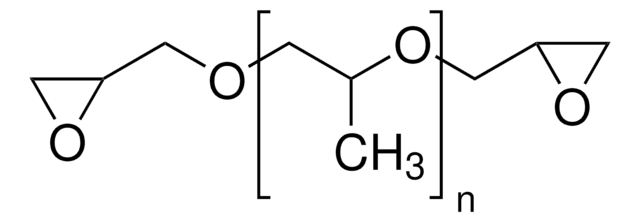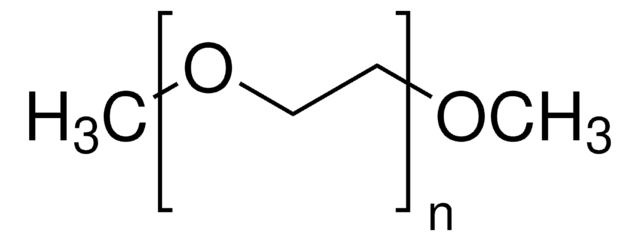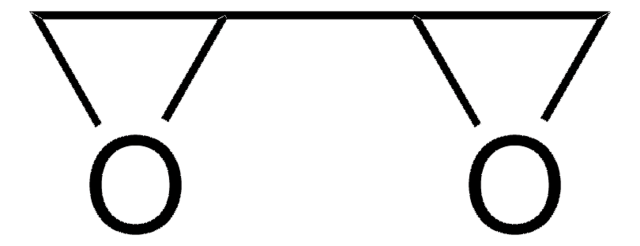475696
Poly(ethylene glycol) diglycidyl ether
average MN 500, cross-linking reagent amine reactive, glycidyl
Sinónimos:
Polyethylene glycol, Diepoxy PEG, PEG diglycidyl ether, Polyoxyethylene bis(glycidyl ether)
About This Item
Productos recomendados
Nombre del producto
Poly(ethylene glycol) diglycidyl ether, average Mn 500
mol wt
average Mn 500
Quality Level
reaction suitability
reagent type: cross-linking reagent
reactivity: amine reactive
refractive index
n20/D 1.47
Ω-end
epoxy
α-end
epoxy
polymer architecture
shape: linear
functionality: homobifunctional
storage temp.
2-8°C
InChI
1S/C8H14O4/c1(9-3-7-5-11-7)2-10-4-8-6-12-8/h7-8H,1-6H2
InChI key
AOBIOSPNXBMOAT-UHFFFAOYSA-N
¿Está buscando productos similares? Visita Guía de comparación de productos
Categorías relacionadas
General description
Application
Related product
Storage Class
10 - Combustible liquids
wgk_germany
WGK 3
flash_point_f
386.6 °F - closed cup
flash_point_c
197.00 °C - closed cup
ppe
Eyeshields, Gloves
Elija entre una de las versiones más recientes:
¿Ya tiene este producto?
Encuentre la documentación para los productos que ha comprado recientemente en la Biblioteca de documentos.
Los clientes también vieron
Artículos
Patterning of PEG-based Hydrogels - Engineering Spatial Complexity
Devising biomaterial scaffolds that are capable of recapitulating critical aspects of the complex extracellular nature of living tissues in a threedimensional (3D) fashion is a challenging requirement in the field of tissue engineering and regenerative medicine.
Nuestro equipo de científicos tiene experiencia en todas las áreas de investigación: Ciencias de la vida, Ciencia de los materiales, Síntesis química, Cromatografía, Analítica y muchas otras.
Póngase en contacto con el Servicio técnico





